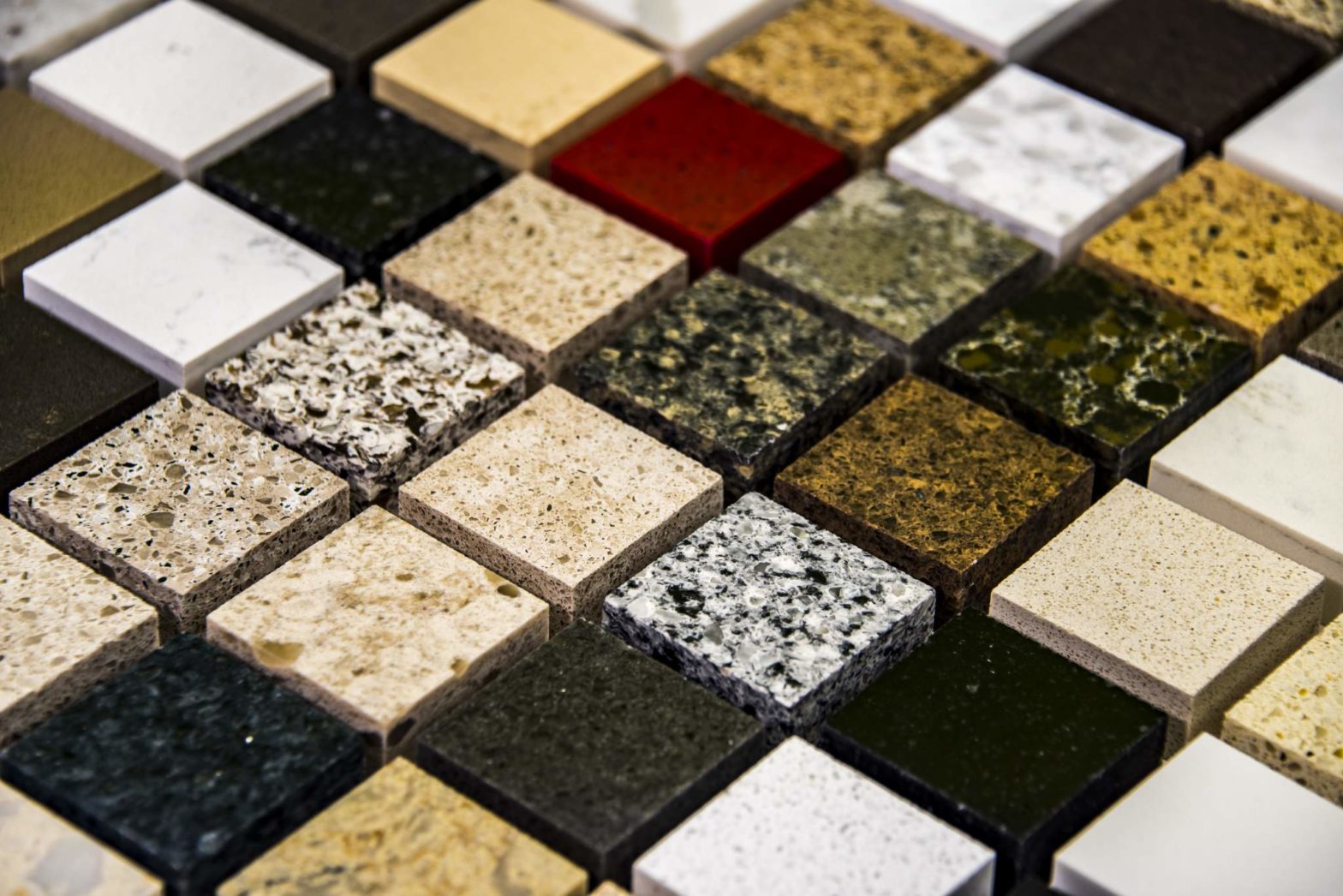
Granite is an igneous rock made up of three main minerals: quartz, feldspar, and mica. The proportions of these minerals can vary, which gives granite its distinctive appearance and color. Quartz is the most abundant mineral in granite, making up between 20-60% of the rock. Feldspar is the next most common mineral, accounting for 35-45% of the rock, while mica makes up the remaining 2-10%.
Granite is one of the oldest and hardest rocks on Earth, with a Mohs hardness scale rating of 6-7 out of 10. This makes it resistant to abrasion and erosion, which is why it is commonly used as a building material for monuments, sculptures, and countertops. Its durability also makes it ideal for use in outdoor settings, such as paving stones and landscaping features.
The word “granite” comes from the Latin word granum, which means “grain” or “seed”. This refers to the visible grains or crystals that make up the rock. Granite is often prized for its aesthetic qualities, which can include speckles, swirls, and veins of color that are created by the different minerals.
Granite is formed from the slow cooling and solidification of magma beneath the Earth’s surface. This process can take millions of years, during which time the minerals in the magma crystallize and fuse together to form a solid rock. Granite is typically found in areas where there has been volcanic activity, such as around the edges of tectonic plates.
The first use of granite dates back to ancient Egypt, where it was used to construct the pyramids and other monumental structures. Granite was also used extensively in ancient Greece and Rome, where it was used for buildings, sculptures, and roads. Today, granite is still a popular building material around the world, and it is commonly used in both residential and commercial construction projects.
Granite has been used throughout history as a building material for its durability and aesthetic appeal. The use of granite in architecture dates back to ancient times, with examples found in structures such as the ancient Egyptian pyramids, the Acropolis in Greece, and the Colosseum in Rome. Today, granite is still a popular material for construction, with uses ranging from countertops and flooring to facades and monuments.
The famous El Capitan rock formation in Yosemite National Park is made of granite and attracts thousands of rock climbers each year. El Capitan is one of the largest granite monoliths in the world, rising 3,000 feet above the valley floor. The sheer face of the rock provides a challenging climb for experienced rock climbers, and has been climbed by many legendary climbers throughout history.
The granite industry in the United States began in the 1830s in Quincy, Massachusetts, which became known as the “Granite City”. Quincy granite was used in many notable structures, including the Bunker Hill Monument and the U.S. Treasury building in Washington, D.C. The industry continued to grow and by the late 1800s, granite was being quarried in states such as Vermont, Georgia, and Maine.
The Statue of Liberty’s pedestal is made of granite from Stony Creek, Connecticut. The pedestal, which stands 154 feet tall, was constructed in the late 1800s using granite blocks that were shipped from Connecticut to New York. The granite was chosen for its durability and ability to withstand the harsh weather conditions of New York Harbor.
The largest granite quarries in the world are located in Barre, Vermont. The quarries in Barre produce high-quality granite that is used for monuments, sculptures, and building facades. The granite from Barre is known for its uniformity and durability, and has been used in notable structures such as the Vietnam Veterans Memorial in Washington, D.C.
The Empire State Building in New York City is made of granite from Stony Creek, Connecticut: The Empire State Building, an iconic skyscraper in New York City, is constructed using 200,000 cubic feet of Stony Creek granite, which was quarried from a small town in Connecticut. The granite’s beautiful blue-grey color with white specks gives the building its distinctive appearance. It was the largest building in the world when it was completed in 1931 and is still considered one of the world’s most famous and recognizable buildings.
The Mount Rushmore National Monument in South Dakota is made of granite and features the carved faces of U.S. presidents: Mount Rushmore is a famous national monument located in the Black Hills region of South Dakota. It features the faces of four U.S. presidents – George Washington, Thomas Jefferson, Theodore Roosevelt, and Abraham Lincoln – carved into a granite mountain. The carving project was led by sculptor Gutzon Borglum and took nearly 15 years to complete.
The Rosetta Stone, a famous ancient Egyptian artifact, is made of granite: The Rosetta Stone is a slab of granodiorite, a type of granite, that is inscribed with a decree issued in 196 BC by the Egyptian pharaoh Ptolemy V. The decree is written in three scripts – Ancient Greek, Egyptian hieroglyphs, and Demotic script – which helped scholars decipher ancient Egyptian hieroglyphs.
The ancient Romans used granite in their aqueducts, bridges, and public buildings: The Romans were known for their impressive engineering feats, and granite played an important role in their construction projects. Granite was used for aqueducts, bridges, and public buildings because of its durability and resistance to weathering. Examples of Roman granite structures include the Colosseum and the Pantheon in Rome.
Granite is also used for countertops, flooring, and decorative accents in modern homes and buildings: In addition to its use in monumental architecture, granite has become a popular material for use in modern homes and buildings. Granite countertops are highly sought after for their durability and beauty, while granite flooring provides a hard-wearing surface that can withstand heavy foot traffic. Granite is also used for decorative accents, such as fireplace mantels, sculptures, and outdoor landscaping features.
The United States Geological Survey (USGS) estimates that there are over 1,500 different types of granite in the world, which vary in color, texture, and composition depending on the minerals and geographic location where they were formed.
The mining and processing of granite can have significant environmental impacts, including deforestation, soil erosion, and water pollution. Quarrying of granite often involves heavy machinery, blasting, and excavation, which can result in land degradation and habitat destruction.
Granite can be found in various colors, including black, gray, pink, white, and green. The color and texture of granite can be influenced by the geographic location where it was formed, the temperature and pressure conditions during its formation, and the minerals present in the rock.
The dimension stone industry, which includes granite and other natural stone products, has a global market value of over $200 billion. Granite is widely used in construction, including as building facades, flooring, countertops, and decorative accents, as well as in monuments and gravestones.
Granite is often used for gravestones and monuments due to its durability and resistance to weathering. Many famous monuments around the world, including the Taj Mahal in India and the Mount Rushmore National Monument in the United States, are made of granite. Granite gravestones are also popular due to their ability to withstand harsh weather conditions and maintain their appearance over time.
The granite cliffs of Yosemite Valley were formed over millions of years due to a combination of erosion and glaciation. The granite rocks were formed deep within the Earth’s crust through intense heat and pressure. As the overlying rock was eroded away, the granite was exposed and sculpted by glacial movements and the flow of rivers, creating the iconic landscape of Yosemite National Park.
The Great Pyramid of Giza, built over 4,500 years ago, is one of the Seven Wonders of the Ancient World. The outer surface of the pyramid was originally covered with polished white limestone, but over time the casing stones were removed, leaving the granite core exposed. The granite blocks used in the pyramid were quarried in Aswan, Egypt, and transported over 500 miles to the pyramid site.
The city of Aberdeen, located in northeast Scotland, is known as the “Granite City” due to its many buildings made of locally sourced granite. Aberdeen is situated near several large granite quarries, which have been in operation since the 18th century. The city’s architecture is characterized by the use of gray granite, which gives many of its buildings a distinctive appearance.
The Parthenon, a temple dedicated to the Greek goddess Athena, was constructed in Athens, Greece, in the 5th century BC. The temple’s columns and other architectural features were made from Pentelic marble, while the floor and other parts of the structure were made from a local gray-white granite quarried from Mount Pentelikon. The granite was chosen for its durability and resistance to weathering.
Brazil is the world’s largest producer of granite slabs, accounting for over half of the global market. The granite industry in Brazil is worth over $1 billion annually and employs over 200,000 people. The country’s abundant natural resources and advanced technology have helped it become a major player in the global granite market. Brazilian granite is known for its wide range of colors and patterns, and is used in everything from countertops and flooring to monuments and public buildings.







